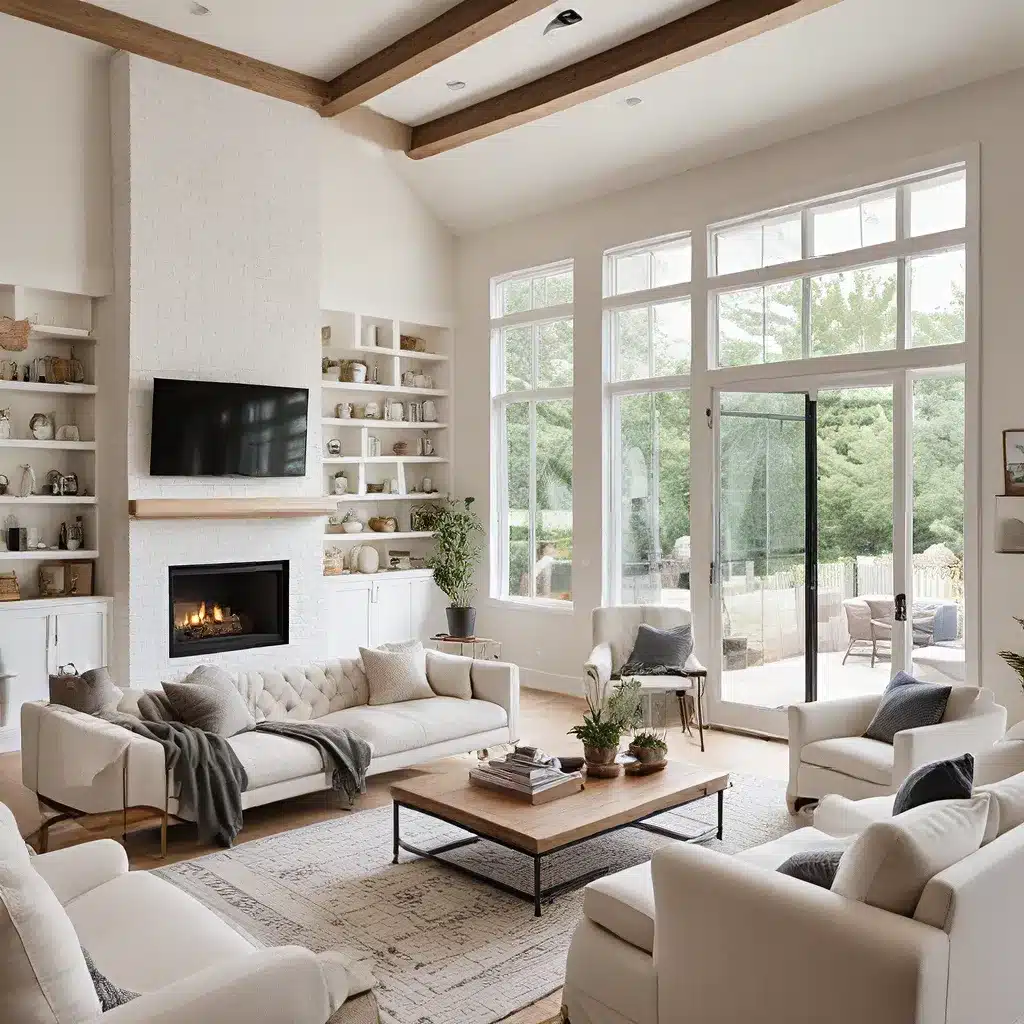
Ah, the age-old dilemma of interior design – how does one strike the perfect balance between form and function? It’s a question that’s plagued homeowners and design enthusiasts alike, leaving many of us scratching our heads and wondering if we’ll ever achieve that elusive harmony.
Well, my friends, fear not! Today, I’m here to share my insights and hopefully shed some light on this perplexing predicament. As a self-proclaimed interior design aficionado, I’ve made it my mission to uncover the secrets to creating spaces that are not only visually stunning but also supremely practical.
The Importance of Proportion
Let’s start with one of the most crucial elements of balancing form and function: proportion. You see, when it comes to selecting the right lighting fixtures, the size and scale of the room can make all the difference. As James Fielding, a renowned lighting design expert, explains, “In spacious rooms with high ceilings, a large chandelier can make a bold statement, becoming a focal point that exudes elegance and grandeur. However, in smaller rooms, an oversized fixture can overwhelm the space and disrupt the overall aesthetic.”
It’s all about finding that Goldilocks moment – not too big, not too small, but just right. And let me tell you, it’s not as easy as it sounds. I once had a client who was absolutely enamored with a stunning crystal chandelier, only to realize that it dwarfed their cozy little living room. The poor thing looked like a giant sparkling jellyfish, completely out of place and throwing the entire room off balance.
Needless to say, we had to rethink the lighting strategy and opt for a more proportionate fixture that complemented the scale of the space. And let me tell you, the difference was night and day (pun intended!). The room instantly felt more harmonious, with the lighting effortlessly enhancing the overall ambiance.
Functionality First
But proportion is just one piece of the puzzle. As the experts at Ceramic Arts Network remind us, the practical aspect of providing adequate illumination should never be compromised, no matter how breathtaking the lighting fixture may be.
Think about it – what’s the point of having a gorgeous pendant light if it doesn’t actually light up the space effectively? It would be like trying to cook a gourmet meal in a dimly lit kitchen. You’d end up with a culinary disaster and a serious case of eyestrain.
That’s why it’s so important to consider the specific lighting needs of each room. In the kitchen, for example, task lighting is essential for food preparation and cooking. Under-cabinet lighting can be a game-changer, illuminating the countertop and ensuring optimal visibility while adding a touch of visual interest.
And let’s not forget about the living room or the bedroom – areas where we want to create a cozy, inviting atmosphere. Here, ambient lighting can work wonders, providing a warm, gentle glow that sets the mood and makes us feel right at home.
Layering the Light
Of course, it’s not always a simple matter of choosing one type of lighting and calling it a day. As the experts at Tallbox Design point out, the true magic happens when you layer different types of lighting to create a multifunctional and visually pleasing space.
Imagine a living room with a stunning chandelier as the primary light source, radiating a soft, ambient glow. Now, add in some strategically placed accent lighting to highlight architectural features or that jaw-dropping piece of artwork on the wall. Top it off with a few well-placed task lamps for reading or close-up work, and you’ve got yourself a lighting scheme that’s not only visually arresting but also highly practical.
It’s like a symphony of illumination, with each element playing a crucial role in creating the perfect harmony. And trust me, when you get it right, the results can be nothing short of magical.
Striking the Balance
So, how do you go about striking that elusive balance between form and function when it comes to your home? Well, it’s all about being mindful, adaptable, and a little bit creative.
First and foremost, you need to take the time to assess the unique needs and characteristics of each space. What’s the purpose of the room? How do you plan to use it? What kind of lighting is required to support those activities? These are the questions you need to be asking yourself before you even start shopping for fixtures.
And once you’ve got a clear understanding of the functional requirements, it’s time to let your inner design diva loose. Start exploring different lighting styles, textures, and materials that speak to your personal aesthetic. After all, your home should be a reflection of your unique style and personality.
But here’s the key: don’t just go for the prettiest option and call it a day. Instead, challenge yourself to find pieces that not only look gorgeous but also seamlessly integrate with the practical needs of the space. It might take a little more time and effort, but trust me, the payoff is well worth it.
At Reading General Contractor, we understand the importance of this delicate balance. That’s why we work closely with our clients to create spaces that are not only visually stunning but also deeply functional, ensuring that every nook and cranny is optimized for comfort and convenience.
So, what are you waiting for? It’s time to embrace the power of form and function, and start crafting the home of your dreams. Who knows – you might just discover the secret to interior design bliss in the process.
Related posts:
No related posts.




